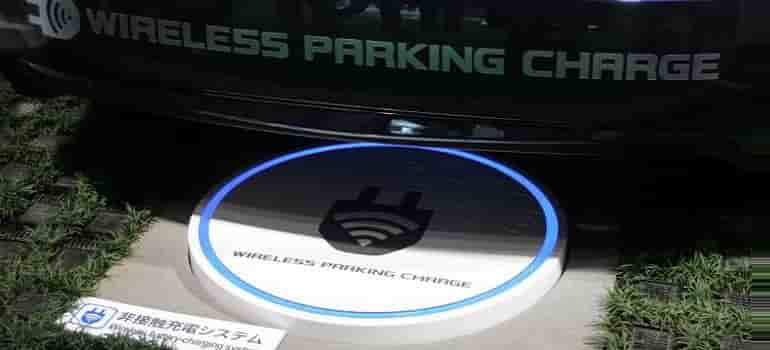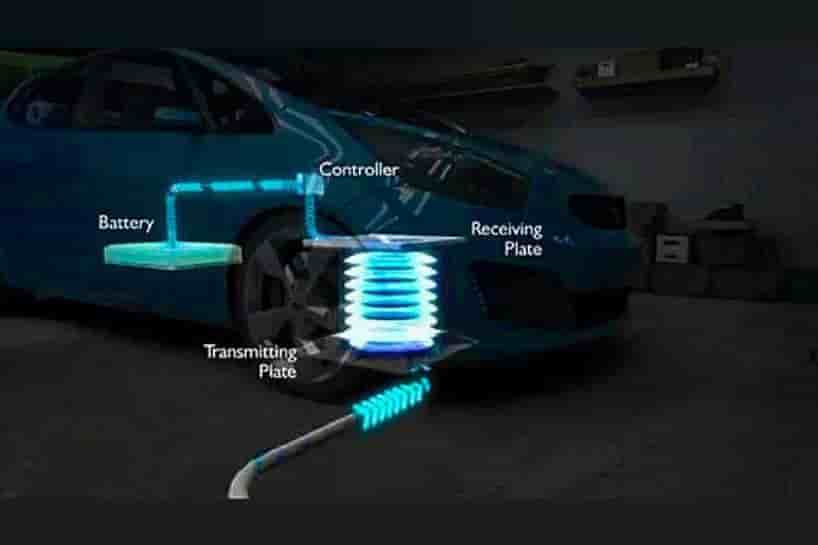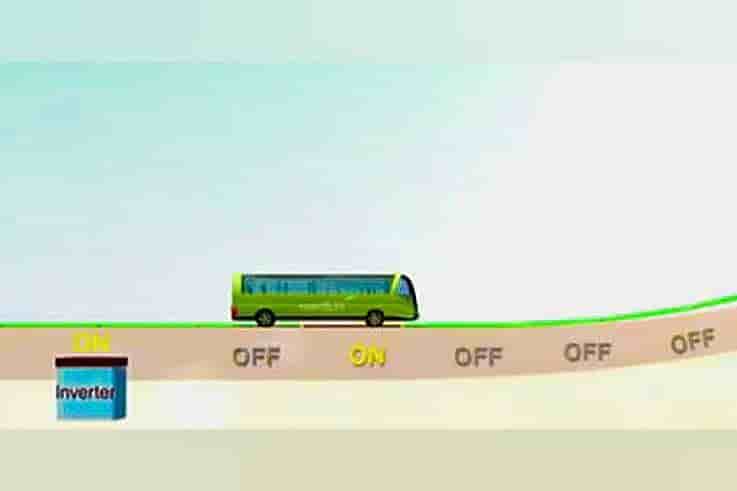
Authors: Nagendra R Gouthamas and Meghana. R
Introduction:
In recent days, global scenario has been changed a lot and there is tremendous development in every field particularly in electrical field. If we don’t converge our innovative ideas for the development of new power technologies, we may face a decreasing trend in the development of power sector. The transmission of power without wires may be one excellent alternative for electricity transmission. This remarkable discovery of wireless power and its core technologies even in present day system are based on Dr. Nikola Tesla’s contribution in the field of all wireless systems. This shows us that he is indeed the “Father of Wireless systems”.
Wireless Power transmission is the transfer of electrical power from a power source to an electrical load without using discrete manmade conductors. The reason for going to wireless power transfer system is to provide reliable power transmission at low cost and to make life more comfortable. This wireless power transmission system is completely eco-friendly and efficient. Just imagine the future with wireless power where in there will be no need of power cables and no need to plug in the electrical devices to the electric sockets for charging which brings a profound change in the society. The core technology used in the wireless power transmission system is Inductive coupling through magnetic fields. An Impedance compensating circuit is also used to achieve maximum power transfer. The core technology is similar to those found in transformers, except primary and secondary windings are physically separated and tuned to resonate for increasing their magnetic coupling. These magnetic field generated by the primary coil is arranged to interact vigorously with matched secondary windings where the load is connected.
This remarkable discovery of wireless power and its core technologies even in present day system are based on Dr. Nikola Tesla’s contribution in the field of all wireless systems. This shows us that he is indeed the “Father of Wireless systems”. The most famous Wardenclyffe tower at Colorado Springs (Tesla tower) also called as “Magnifying wireless transmitter” was designed and constructed by Dr. Nikola Tesla which used Ionosphere to transmit the electrical power all over the earth. The Colorado Springs was commonly known for its Geo-Magnetic activates where Dr. Nikola Tesla built his laboratory, in the centre of the lab he built a massive transformer with primary of the transformer was grounded and other end was raised at a great height. This transformer produced a voltage of several million volts at a frequency of 150 thousand hertz which created a manmade lightning which was 40m long. The tower frame was 57m long with a steel shaft that dipped into the ground and a huge copper hemisphere which worked as a powerful amplification transmitter was installed at the top of the huge tower. With this Dr. Nikola Tesla was able to lit 200 electric bulbs in a radius of 25 miles from the tower. The core technology he used was “The currents transmitted by high frequency standing wave energy”.
With this technology, the power would be transmitted across large distances with negligible losses. But this was an unfortunate incidence that people of the century was not in a position to recognize his splendid work. He is well known as “scientist ahead of time”. Otherwise we may have transmitted electricity wirelessly and would have converted our mother earth a wonderful adobe full of Electricity.
Types of Wireless Power Transfer Systems:
There are a number of different technologies for transmitting electrical energy by means of electro-magnetic waves and by Micro-waves;
- Inductive Coupling – Short range.
- Resonant inductive coupling – Medium range.
- Capacitive coupling – Short range.
- Resonant Capacitive coupling – Medium range.
- Microwave power transmission – Large Range.
- Transmission of Power by LASER
The Frequency required and the efficiency of Inductive and Capacitive coupling is given in the below table:

Laser versus Microwave Wireless Power System Advantages and Disadvantages (compilation of findings)

Now let’s see the possible ways of utilizing these categories of wireless Power Transmission;
1. Inductive Coupling:
It consists of two coils one is transmitter coil and the other one is receiver coil. An alternating current in the transmitter coil generates a magnetic field which induces a voltage in the receiver coil. It is the simplest method of wireless power transfer. This method is same as the one used in transformers, In transformer core acts as a path for the flux but in Wireless Power transmission there is no core, Air cored coils are used. The power can be transmitted only up to few meters. The efficiency of the power transfer depends on the coupling between the inductors and their quality.
2. Resonant inductive coupling:
It consists of a capacitor and an inductor to form the resonator. The capacitor act as an electric field and inductor act as a Magnetic field. Capacitor is connected in parallel the coil. Resonance makes two objects interact very strongly. The power transmission is possible only when the resonance condition satisfied. Resonance is the phenomenon in which the reactance of the capacitance (XC) and the inductance (XL) should be equal.
3. Microwave Power Transmission:
This is the long-range power transmission. The power can be transmitted to a long distance up to kilometers. There are three steps involved in this method. First one is electrical energy is converted to microwave energy. Then the microwave is captured using Antenna. Then the microwave is converted into electrical energy. Ac cannot be directly converted to microwave energy. Ac is converted to dc. Then the dc is converted to microwave using magnetron.
• Laser versus Microwave Power Transfer:
Both laser and microwave power transmission has been demonstrated and studied over the last 30 years offering different advantages for different applications. Provides a quick look at some of the positive and negative aspects of each approach. For applications where size and weight are limiting factors, such as small unmanned systems or space applications, laser systems provide a big advantage compared to microwave.
The systems differ in wavelength for operation to minimize atmosphere attenuation which drives the properties of the overall system. “Microwave frequencies of either 2.45 or 5.8 GHz (0.12-0.05 m; both in the industrial, scientific and medical (ISM) frequency band), laser energy transmission takes advantage of the atmospheric transparency window in the visible or near infrared frequency spectrum”. Highlights that atmosphere opacity by wavelength. As can be seen, laser systems in the visible range are attenuated slightly, while microwave systems are transparent to the atmosphere. These wavelength differences determine the size of the receiver and transmitter needed to operate. The laser system at 1μm versus the 0.12-0.05 m microwave system can be achieved using significantly smaller transmit and receive components.
Applications of Wireless Power Technologies for Electric Vehicles:
Wireless power transmission is used to power electrical devices in case where the interconnecting wires are inconvenient or hazardous. Wireless electricity can eliminate frequent plugging in of devices to the electrical sockets and provide an efficient way to transmit the power to the moving parts where electricity can’t be reached through wires. Wireless Electricity finds its application where ever we use electrical loads like mobile phones, laptops, electric vehicles and all other domestic electrical utilities. It can also bring more and more electrical Vehicles on road by putting them under wireless electricity. This Technology can provide a convenient safe and flexible means to charge electric appliances.
Wireless power transfer in electric vehicles may bring a profound change in the charging system. Plug in Electric vehicles need cables & Plug charges but physical plug charges and Cables may become hassle and messy. With the system where we have to physically plug in chargers, there are number of occasions where the owners can often forget to charge the vehicles. Figure shows the wireless charging in Electric vehicles.

For stationary applications like charging of plug in electric vehicles at home, Wireless transmission technology adds a convenient factor compared to actual plugging in. which means the vehicle will have full charge every morning. By re-configuring the transformer and altering the resonant frequency energy is transferred to the battery with lower energy losses. Sufficient power for the battery can be transferred from the primary to secondary circuit without significant energy losses. The electrical power is then transmitted to the battery which is electrically coupled to the secondary circuit through the air core transformer.

Figure shows dynamic charging with segment control technology. Dynamic charging in simple words mean charging of the electrical vehicles even under the movement in electrically equipped roads. In larger cities, dynamic charging offers an even greater impact utilizing existing infrastructures as vehicles travel along the busy freeways wireless charging can also occur while the vehicle is in motion. The transmitting plate kept under the road will be ON only when the vehicle passes over the plate (the vehicles having receiving plate comes into area of transmitting plate it turns on) this is known as segment control technology. The power lines are managed by Segment Control Technology, which supply power to the vehicle only when it is passing over the power line. This technology prevents a magnetic field from being generated while pedestrians walk or other vehicles run on the road as well as wasting of energy. Dynamic charging allows electricity to supply a very large fraction of the energy for the transportation sector and reduce considerable petroleum consumption. Previously traffic delays now provide of charge while passing over in motion charges. Rain does not affect the charging capability and the transmitting circuit.
Conclusion:
The transmission of power without wires is not only a theory, it is now a reality and in future it should be made available for domestic electrical loads and EVs. It provides non-radiative energy transfer and it does not harm the environment and human beings. The experimental studies have observed the power transmission is efficient up to 20cm distance. The electrical energy can be economically transmitted without wires to any terrestrial distance if the coupling coefficient between the coils are good this technology just acts as a transformer and gives an efficiency in the range of 90%. This can be transmitted to anywhere in the globe and eliminate the need for an inefficient, costly, and capital-intensive grid of cables, towers, and substations. In near future, the world should be completely wireless.
ABOUT THE AUTHORS

Nagendra R Gouthamas
Profession: BMS Lead Hardware Engineer (R&D) at Frisson E-Motor Werks.
Field of Study: Wireless Power Transfer (Magnetism)

Meghana. R
Profession: Studying Bachelor’s degree 3rd year,
Electronics & Communication at Atria Institute of Technology, Bengaluru.
Field of Study: Power Electronics

